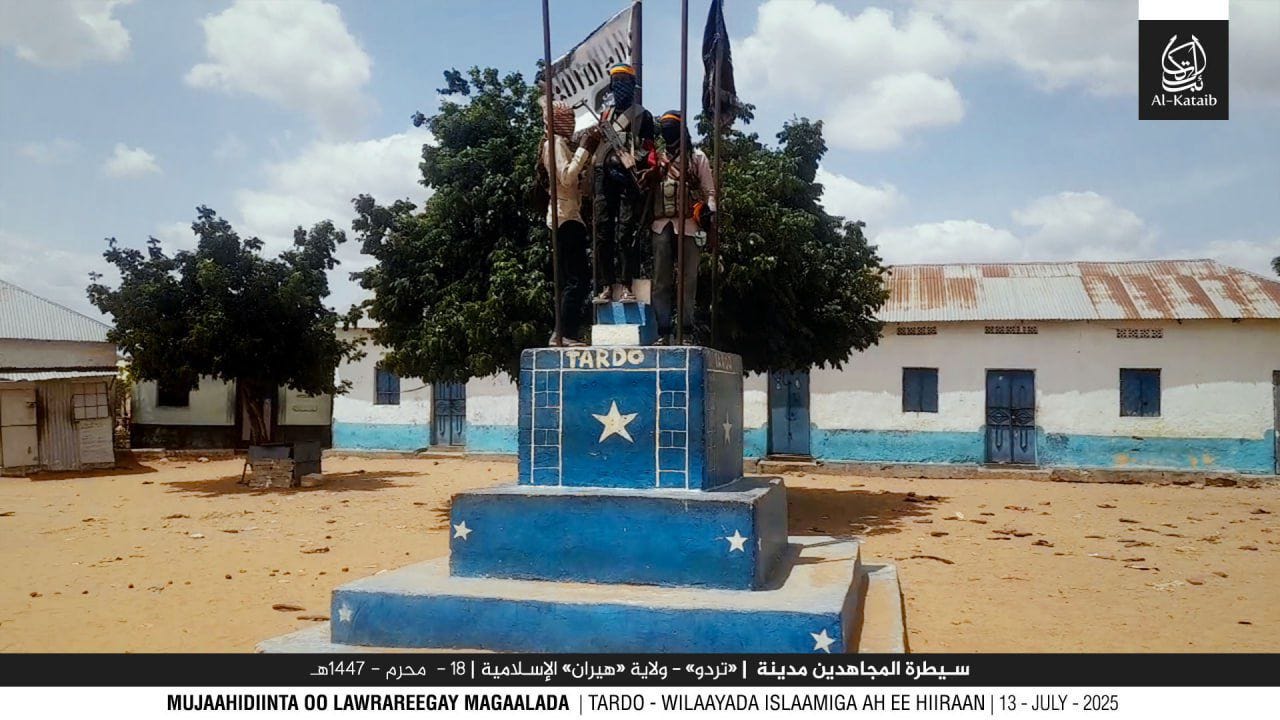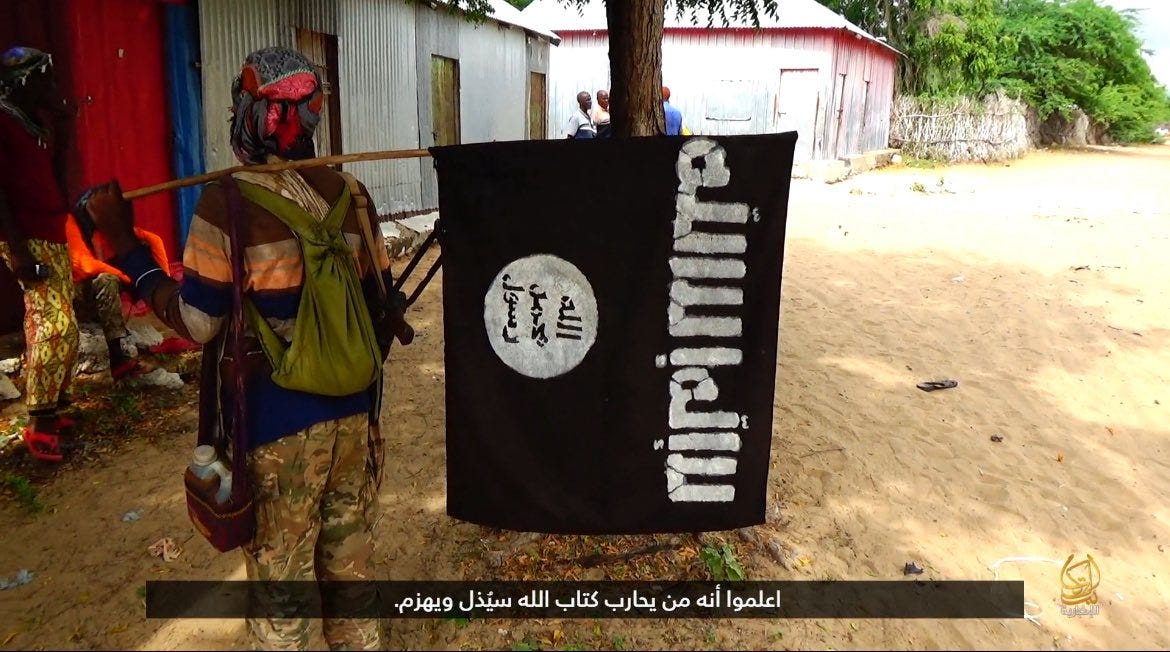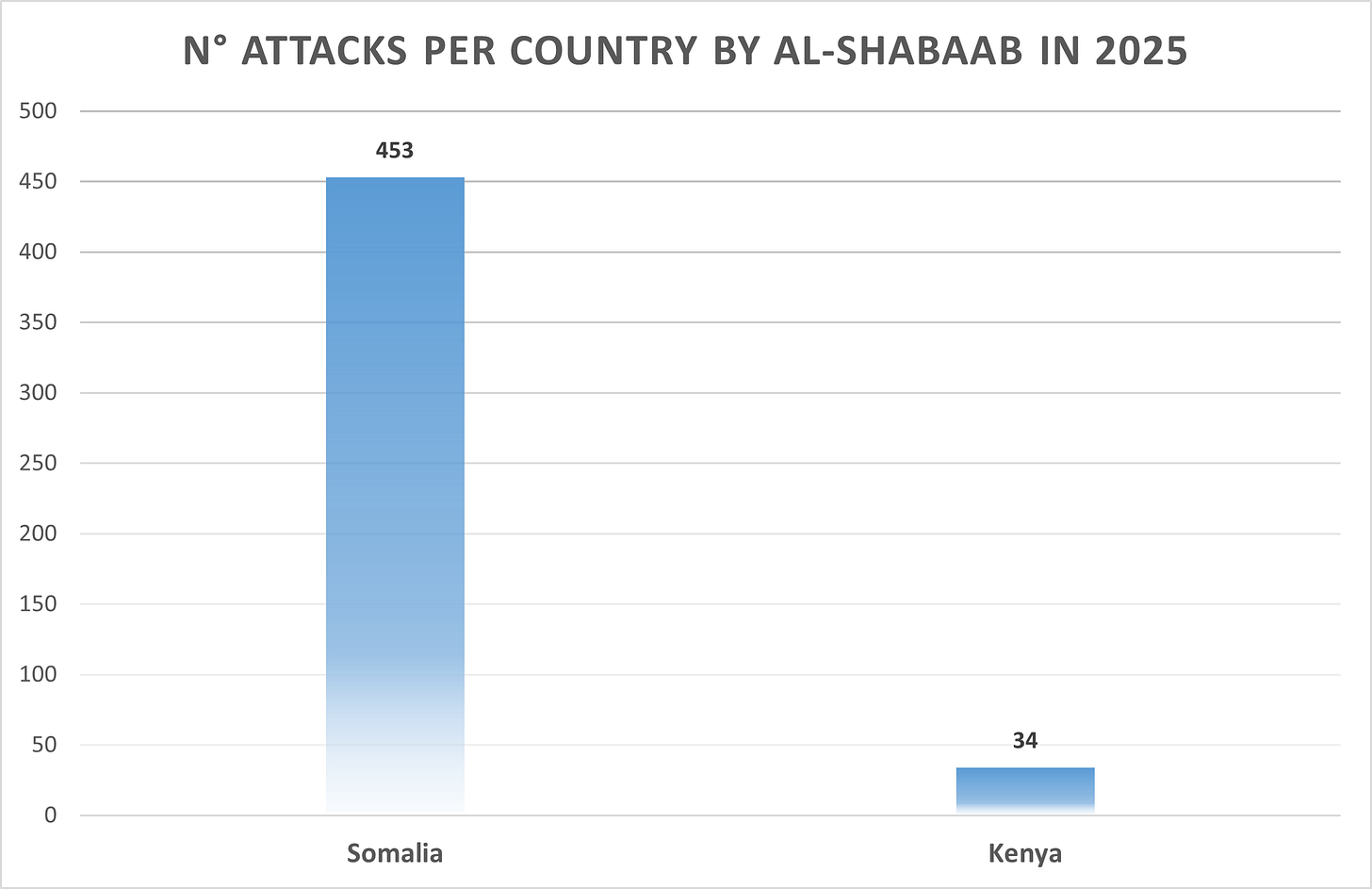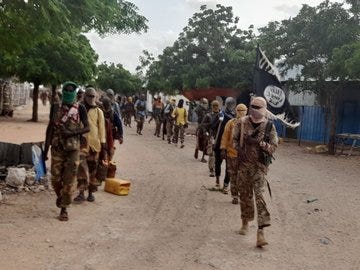Security Risk Monitoring and Threat Assessment of al-Shabaab in Somalia
Military Operations July 2025
This report examines and analyses the military operations of Harakat al-Shabaab al-Mujahidin in Somalia.
Date: July 2025.
Method: Monitoring of jihadist propaganda (videos, photos, statements, claims) and reports from sources in the field.
Organisations/groups:
Harakat al-Shabaab al-Mujahidin
Affiliation/Alliance: Al-Qaeda
Impacted areas:
Somalia, Kenya
Overview:
Despite anti-terrorism and security operations by the Somali army and pro-government militias against al-Shabaab over the past two years, the terrorist group continues to pose a threat to the Somali state. Although al-Shabaab's violence has slightly decreased in 2024, its pattern of activity has changed, and security threats and attacks in the country by the group are still very high. The al-Shabaab offensive has grown violently and steadily since mid-February 2025, with the Somali terrorist group launching a large military campaign in central Somalia, mainly in the regions of Middle Shabelle and Hiiran. The offensive was launched against the Somali National Army (SNA), the forces of the African Union’s Stabilisation Mission in Somalia (AUSSOM), and allied clans’ militias.
The group aims to retake territory lost during the 2022 Somali government/African Union offensive, particularly strategic cities and key supply routes. Although al-Shabaab's violence has slightly decreased in 2024, its pattern of activity has changed, and the group’s security threats and attacks in the country are still very high. The al-Shabaab offensive has grown violently and steadily since mid-February 2025, with the Somali terrorist group launching a large military campaign in central Somalia, mainly in the Middle Shabelle and Hiiran regions. The offensive was launched against the Somali National Army (SNA), African Union Stabilisation Mission in Somalia (AUSSOM) forces and allied clan militias. The group seeks to regain territory lost during the 2022 Somali government and African Union offensive, particularly strategic towns and supply routes.
The offensive began on 15 February 2025, with coordinated attacks on several Somali military positions, including ground assaults with car bombs. Al-Shabaab captured several towns and villages and destroyed numerous bases and camps. All attacks were documented with photos and videos.
Al-Shabaab is using the following tactics to control occupied areas:
• Political infiltration: through religious leaders, Sharia courts, sermons.
• Targeted assassinations: elders, mayors and local officials are regularly targeted.
• Tax collection: even in areas officially controlled by the government, al-Shabaab sometimes collects “zakat”.
• Media: they showcase the return of Sharia law, accusing the government of being corrupt and serving the West.
Both the US and Ethiopia conducted air strikes against al-Shabaab insurgents during the fighting, with the Somali government repeatedly requesting help from US AFRICOM. After hitting the Middle Shabelle area (which it largely controls) hard, al-Shabaab is now focusing on the Lower Shabelle and Hiiran regions, steadily increasing the pressure.
Number of attacks July 2025: 61
AREA:
Somalia: 51 Attacks
Afgoye area, Coriolei area; Janaale area, Lower Shabelle Region;
Kismayo area; Abdale Birole area, Ras Kamboni, Lower Juba Region;
Baidoa area; Dinsor area, Sabid area, Bay Region;
Wajid area, Bakool Region;
Harre area, Gedo Region;
Beledweyne area, Muqakoori area, Mahas area, Tardo area; Hiraan Region;
Mahaday area, Balad area, Middle Shabelle;
Mogadishu area;
Kenya: 10 Attacks
Banissa sub-county, El-Golg area, Ramu area, Mandera County;
Mangai area, Mlimani area, Kiunga area, Lamu County;
Khorof Harar area, Wajir County.
Target: Somali Special Forces, Danaab Special Forces, Somali Army, Ethiopian Army, Ugandan Army, Kenyan Army, Ma’awisley militia, Somali pro-government militias, Somali Police, Burundian Army, Somali Intelligence, United Nations diplomatic missions.
The official media outlets, al-Kataib Media and al-Shahada News, disseminated the propaganda, including photos, videos, and claims. The group has released 54 statements claiming its military activities.
Conclusion: Security Threat Assessments
Al-Shabaab maintains a qualitative capacity to conduct complex attacks both in the capital and surrounding areas, using explosive devices, mines and targeted assassinations against government officials and security forces.
The group’s influence is not limited to rural areas, but extends to the outskirts of Mogadishu and its neighbourhoods, sometimes even penetrating official state institutions. Despite the Somali government’s efforts to strengthen control, its power remains geographically limited, offering jihadists ample room for manoeuvre and refuge for their operations.
Compared to the previous month, attacks have decreased slightly, but they have increased in quality, and direct control of conquered areas has increased.
The areas affected by attacks in the Middle Shabelle region have decreased, as the area is now under al-Shabaab control, but attacks in the Lower Shabelle, Lower Juba and Hiran regions have increased significantly, as has their presence in surrounding regions. Al-Shabaab is seeking to strengthen its control over conquered or occupied areas and is conducting increasingly massive attacks to occupy entire districts.
In 2025, the al-Shabaab insurgency proved resilient and growing and remains the main security challenge in war-torn Somalia. Al-Shabaab continues to control many areas of the country and continues to launch deadly attacks against international and local forces in the region.
Daniele Garofalo is a researcher and analyst on Jihadist Terrorism, Islamist Insurgents and Armed Groups. He is an expert in Monitoring Jihadist Media Channels and Islamist rebels and Armed Groups.
Support my research, analysis and monitoring with a donation here on PayPal.Me/DanieleGarofalo88












